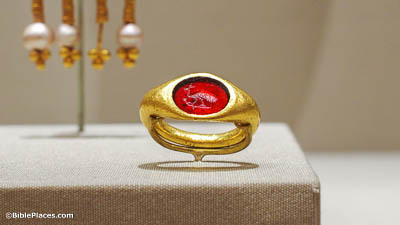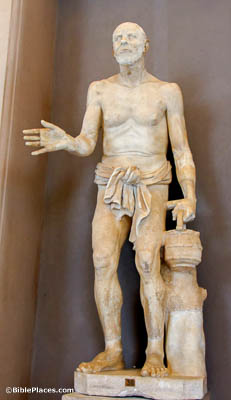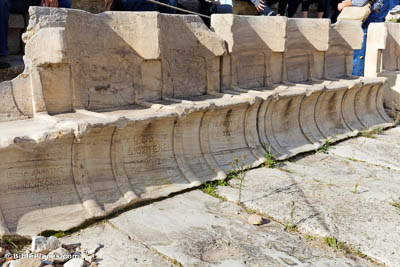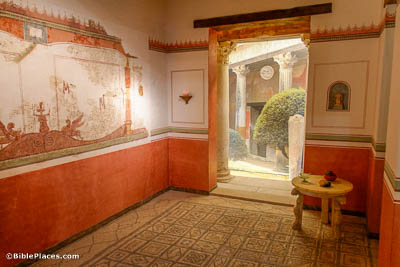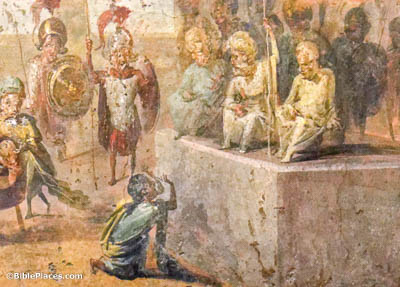If a man comes into your assembly with a gold ring… (James 2:2)
The word “gold ring” (Gk. chrusodaktulios) appears only here in the New Testament. It is a compound word, combining the word “gold” (Gk. chrusion) with the word for “finger” (Gk. daktulos). A person who could afford to wear gold on their finger was clearly wealthy and probably intending to flaunt that fact. This gold ring, set with chalcedony, dates to the 1st or 2nd centuries AD.
